Hola, mis amigos y viajeros,
Welcome to Oaxaca, a place that’s as vibrant as it is historic, nestled within three mountain ranges. But it’s not the mountains that make it special - it’s the history, people, culture, and food.
The people here are descendants of ancient adventurers, who crossed the Arctic land bridge from Siberia around 20,000 years ago. But by around 7000 B.C., the climate had warmed, the great game animals were extinct, and the people began to sow seeds of their favorite edible wild grains, legumes, vegetables, and fruits. Over generations, their fields bloomed with domesticated beans, squash, corn, and avocados, They have been farming beans, squash, corn, and avocados since 7000 B.C. By 2000 B.C., they were building villages. By 500 B.C., some of these had grown into towns like San José Mogote. Around the same time, Oaxaca’s Zapotec ancestors founded Monte Albán, believed to be the Americas’ earliest metropolis. They built monumental structures, pyramids, and palaces, all decorated with inscriptions of their god-kings’ exploits.
Today, Oaxaca is a city that honors its past while embracing the present. It’s a place where history and culture meet in a symphony of flavors - from corn and mole to chocolate. So, come along, and let’s explore Oaxaca together.
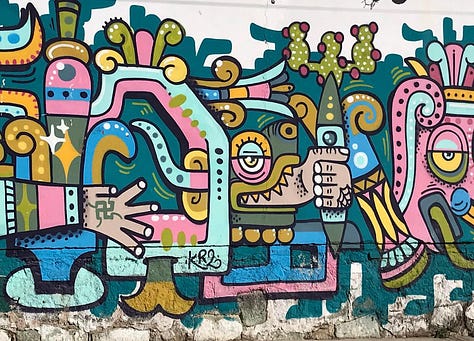

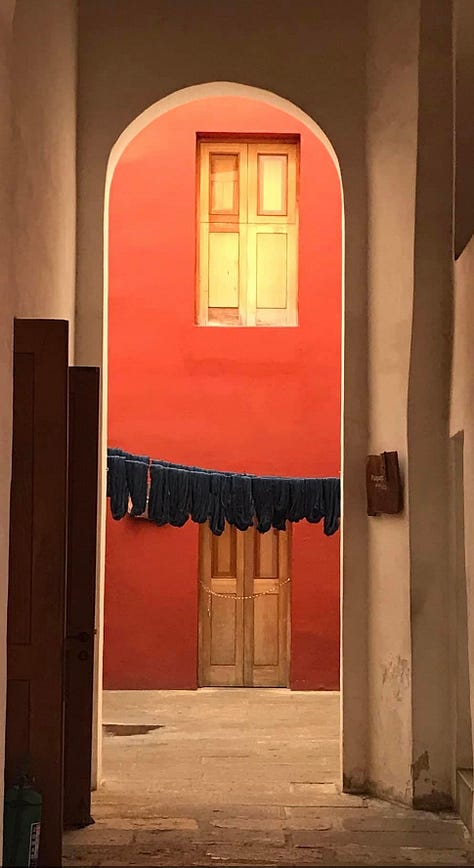
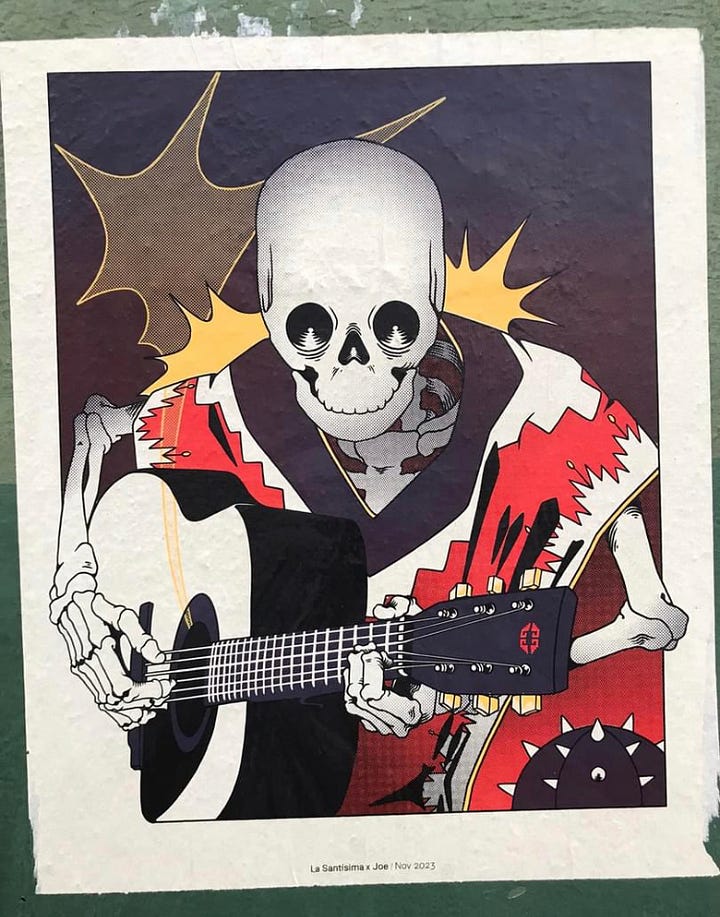

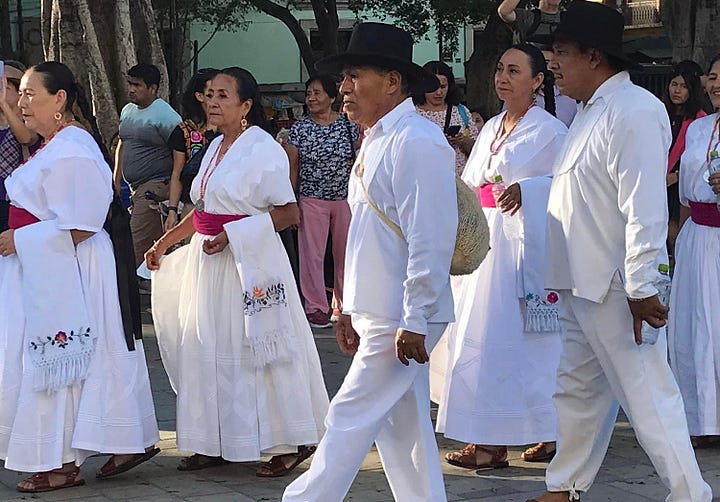
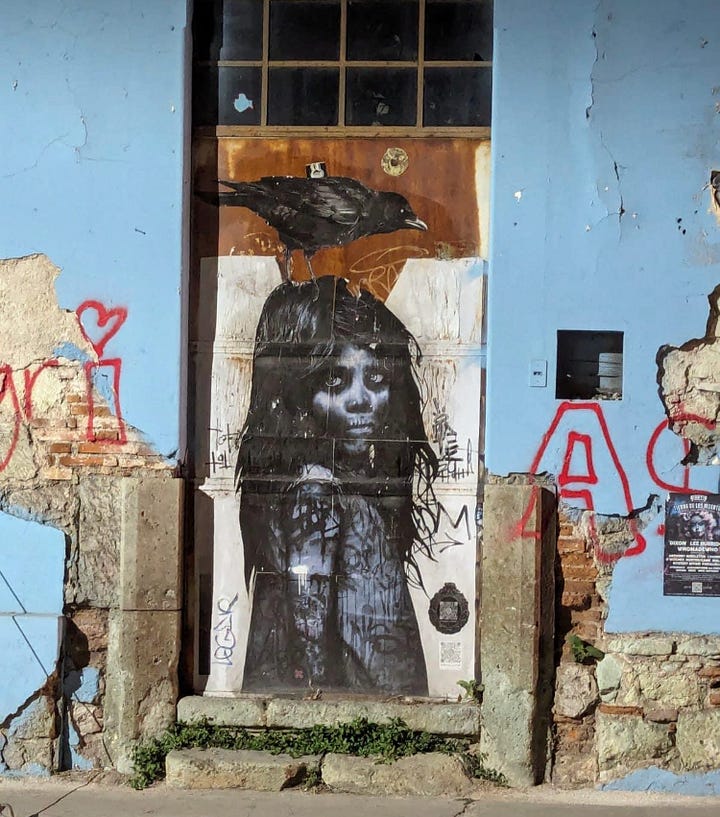
Oaxaca Centro - Murals and Markets
There is so much to explore walking around the Zócalo as the sun bakes the streets during the day, or in the evening as lights cast a magical glow. Oaxaca’s heart comes alive with a bustling energy and a sensory feast.
Wander the streets and see the walls that come alive with murals—the stories of the past in paint, the whispers of revolution, the echoes of Zapotec legends.
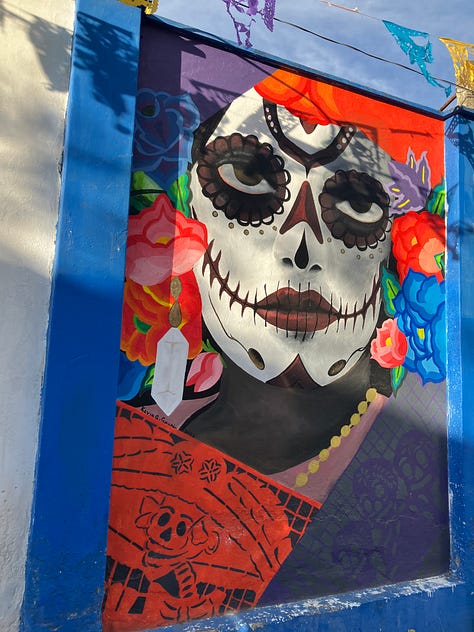
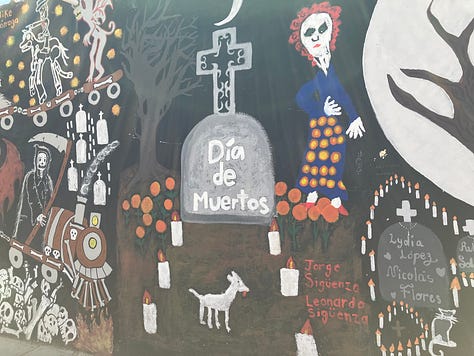
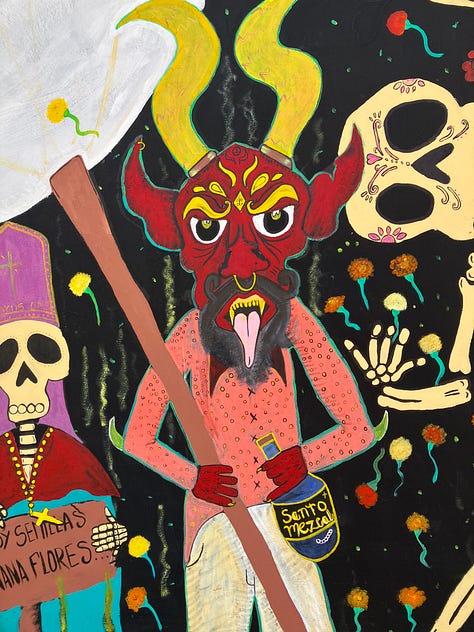
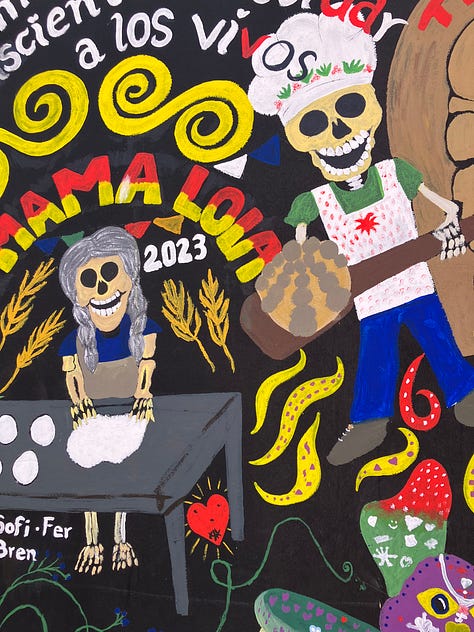
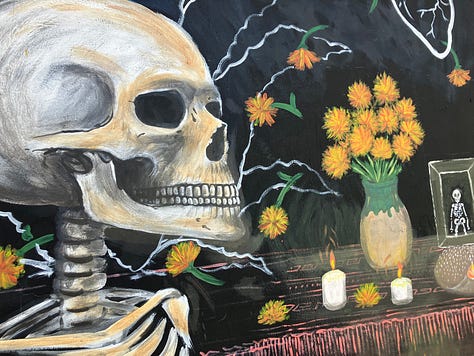
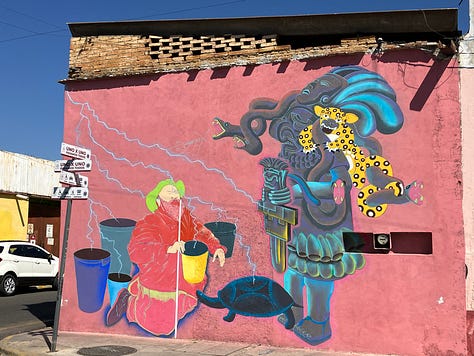
Explore the lively markets that dot the city, their stalls overflowing with handwoven textiles, vibrant ceramics, and spices. It’s a sensory overload of the best kind. The air is thick with the aroma of fresh produce and sizzling meats. Stalls are piled high with everything from rainbow-colored corn to grasshoppers. Yes, you heard me right, grasshoppers. Don’t knock it till you’ve tried it.
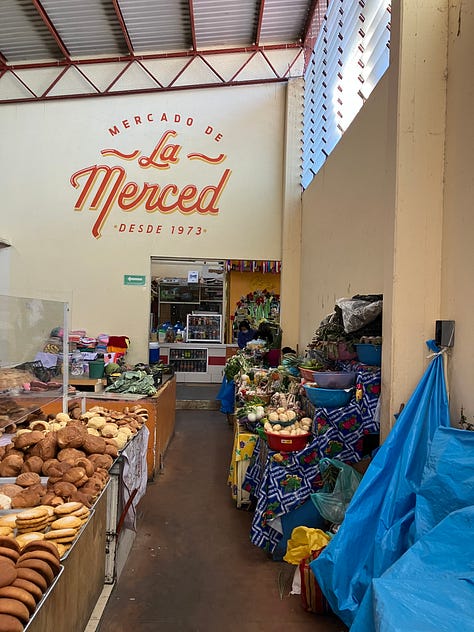
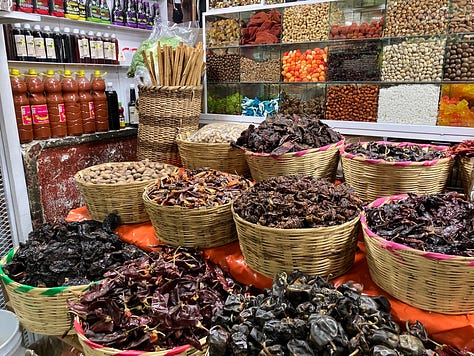
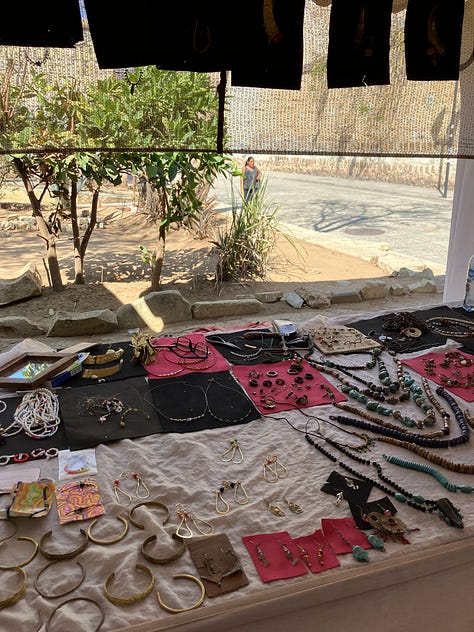
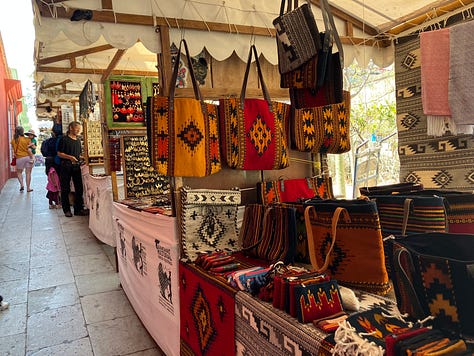
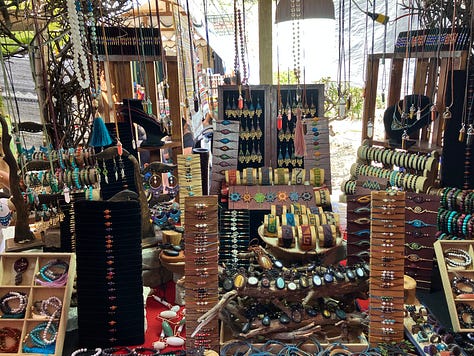
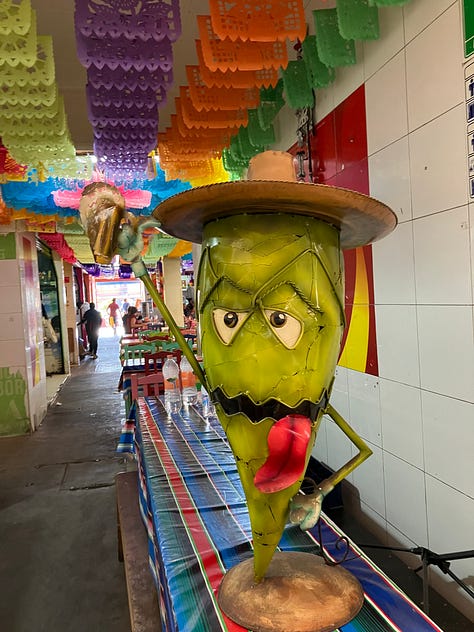
Continue and explore the churches and cathedrals—San Felipe Neri, Santo Domingo de Guzmán, and the grand Catedral de Oaxaca.
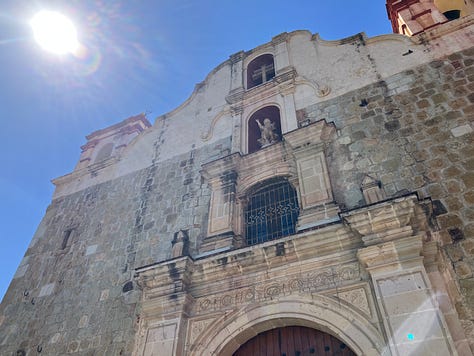
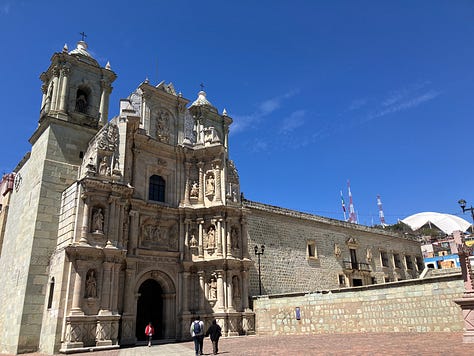
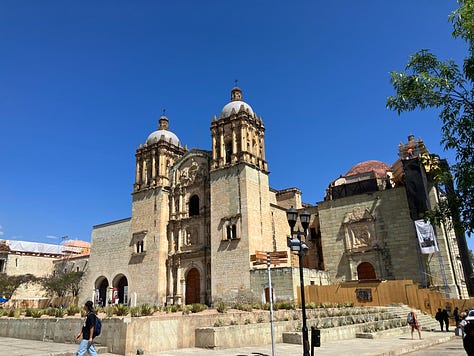
Oaxaca - A Food Mecca
Forget everything you thought you knew about Mexican food. This is the real deal. A celebration of flavors, colors, and textures that’ll make your taste buds think they’ve died and gone to heaven.
Oaxaca has been perfecting its food game for thousands of years. A place where the tomatoes are juicier, the cilantro is fresher, and the jalapenos pack a punch that’ll knock your socks off. And let’s not even get started on the corn. This isn’t your average, everyday corn. This is the granddaddy of all corn, worshipped for over 6,000 years.
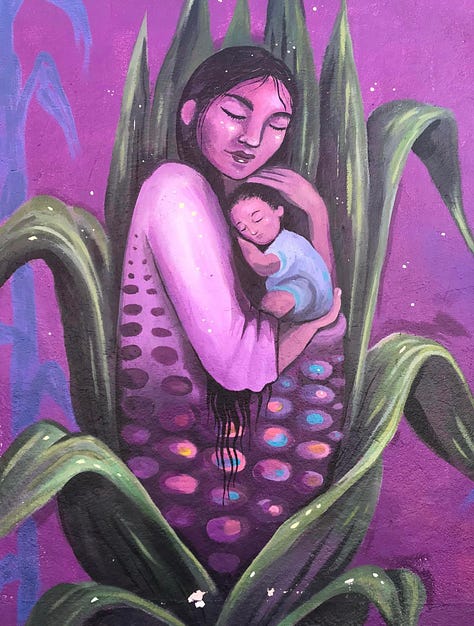
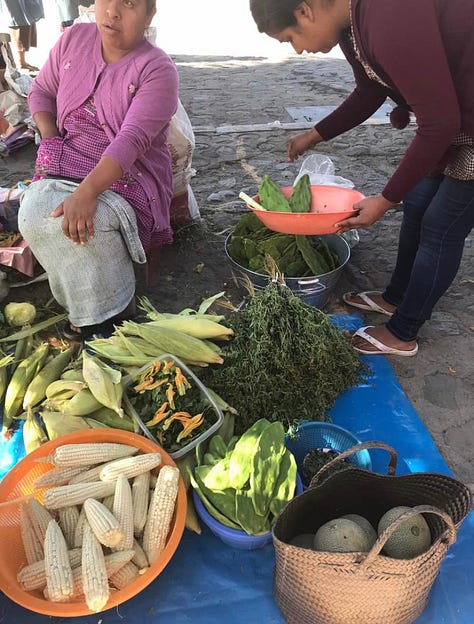
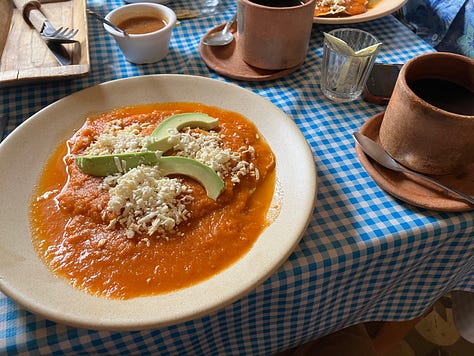
Amazing Maize: In the highlands southeast of Oaxaca City, maize, also known as corn, was first cultivated over 6,000 years ago. This isn’t your typical large-kernel, yellow corn. Oaxacan maize is home to at least 59 species of maize. Maize comes in a rainbow of colors: blue, red, black, purple, orange, yellow, creamy white, and a mix of all, each used for a distinctive purpose with distinctive textures and flavors.
Oaxacan Green Dent Corn: This corn has large green ears with kernels that can have yellow, blue, or purple hues.
Fuji Corn: This corn has kernels that can be yellow, white, or sometimes red.
Rainbow Maize: This corn can be red, blue, yellow, or white.
Heirloom Corn: This corn can come in many colors, including deep red, pale pink, golden yellow, or dark blue.A rainbow of corn colors and the oldest corn in history 6000 years Oaxacan Green dent corn: This corn has large green ears with kernels that can have yellow, blue, or purple hues.
Tomatoes: The origin of tomatoes can be traced back to ancient Mesoamerica. Indigenous peoples were among the first to cultivate and consume tomatoes. These early tomatoes were small, and round, and came in yellow or red hues. The indigenous communities selectively bred tomatoes, leading to the emergence of larger and more varied tomato varieties, including red, yellow, and even purple ones. Tomatoes played a crucial role in the culinary traditions and religious practices of these ancient civilizations used in various dishes, including sauces, stews, and soups.
Quesillo: Quesillo, also known as “Queso Oaxaca,” is a special cheese with a taste that melts perfectly in dishes like quesadillas and tlayudas. The production of quesillo is intricate and involves immersing the quesillo in boiling water, pulling it out, and stretching it into long ribbons. These ribbons are then wound together into balls, resembling a ball of wool, and packaged in protective bags.
The best chocolate on the planet: Oaxaca's hot chocolate is not your ordinary cocoa. Infused with spices like cinnamon and chili, it warms both body and soul. Sip it at smoky market stalls for an authentic experience. The vibrant culture of chocolate and cacao is deeply woven into everyday life. Indigenous traditions surrounding cacao have been preserved and celebrated. When visiting Oaxaca, start your mornings by savoring hot chocolate prepared by local vendors at the outdoor market. This simple yet delightful blend of ground cacao, sugar, cinnamon, and water or milk is a perfect way to kick off your day while you eagerly await the making of tejate. Tejate, an ancient cacao drink, is meticulously crafted by skilled women who massage it for nearly an hour until it releases a natural whipped cream made from cocoa butter.
Mescal: The story of mezcal begins in the pre-Hispanic era, around 400 BC, when indigenous people in Mexico discovered the intoxicating effects of the fermented sap of the maguey plant, also known as agave. Initially, agave was fermented to create pulque. However, with the Spanish introduction of distillation techniques, pulque transformed into mezcal. Mezcal is not just a trendy spirit; it holds deep cultural and spiritual significance in Oaxaca. Traditionally, mezcal was a farmers’ drink, made in small batches and sipped from votive candle holders during festivals.


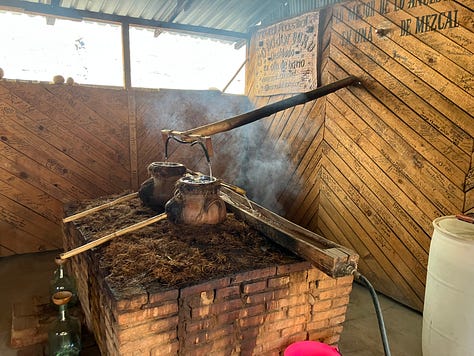
Mescal | © Kacey Carpenter Moles: Oaxaca is renowned for its rich and intricate moles. These complex sauces feature a harmonious blend of ingredients, resulting in a symphony of flavors. The seven moles of Oaxaca, also known as the “mother moles,” are rich and complex dishes and deeply rooted in Oaxacan culinary heritage:
Mole Negro (Black Mole): It features a harmonious blend of up to 30 ingredients, including spicy chiles, tomatoes, sweet fruits, chocolate, and local spices. Slow-simmered for hours, it’s often served with rice and chicken or turkey.
Mole Coloradito (Red Mole): A vibrant red mole, coloradito boasts a base of ancho chiles and includes ingredients like tomatoes, garlic, and sesame seeds. It pairs wonderfully with tamales and enchiladas.
Mole Amarillo (Yellow Mole): This sunny-hued mole combines guajillo chiles, tomatillos, and aromatic spices. It’s commonly served with chicken or pork.
Mole Verde (Green Mole): Fresh and herbaceous, mole verde features green chiles, pumpkin seeds, and epazote. It’s often enjoyed with grilled meats or tlayudas.
Mole Chichilo: A lesser-known but equally delightful mole, chichilo incorporates pasilla chiles, avocado leaves, and a hint of burnt tortilla. It’s typically served with beef or lamb.
Mole Rojo (Red Mole): Not to be confused with coloradito, mole rojo is a robust sauce made with ancho and pasilla chiles, tomatoes, and spices. It complements dishes like tlayudas and memelas.
Mole Manchamanteles (Tablecloth-Stainer Mole): The name playfully refers to its rich, colorful nature. Manchamanteles combines chiles, pineapple, plantains, and tomatoes, resulting in a sweet and savory flavor profile. It’s often served with pork or chicken.
Oaxaca - Ruta Mágica de las Artesanías
Explore as many villages outside of town with history, culture, arts and crafts from 16 different indigenous people.
Monte Albán: Experience the ancient Zapotec capital of Monte Alban on top of the flattened hilltop, in the shadow of Monte Alban. Inhabited over 1,500 years by a succession of peoples – Olmecs, Zapotecs, and Mixtecs – the terraces, dams, canals, pyramids, sports fields, and artificial mounds of Monte Albán were carved out of the mountain.
San Martin Tilcajete: Visit this village and learn about the craft of woodcarving a process passed down through generations, known as alebrijes. These intricate and colorful wooden sculptures often depict fantastical creatures, animals, and other imaginative forms. The inhabitants of Tilcajete are closely connected to the creation of these figures as part of their family environment; they live among stacks of copal logs, with tools, paint, and the very process itself: carving, painting, and displaying pieces for sale within their homes. Thus, children and young people learn this craft from their elders.
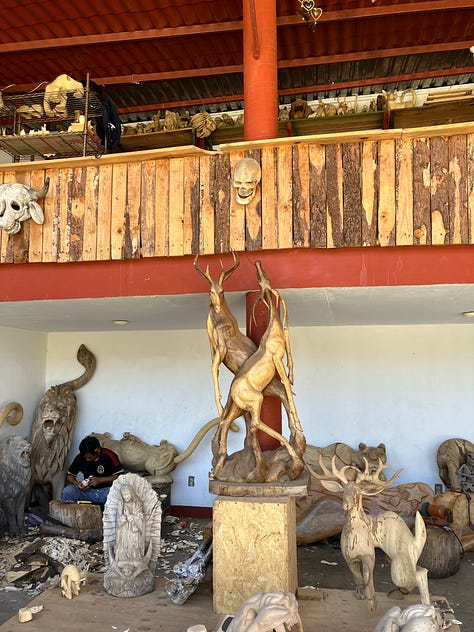
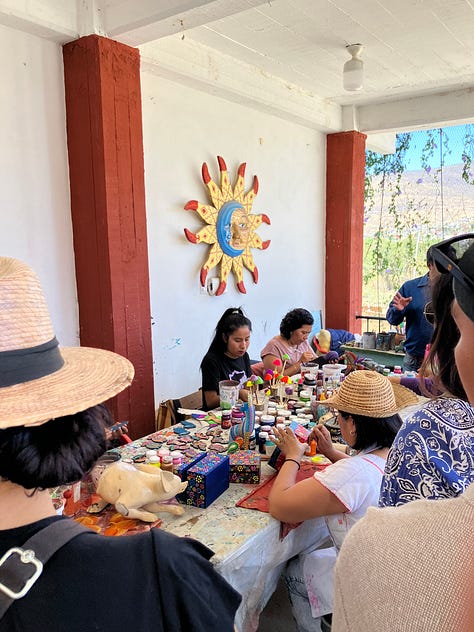
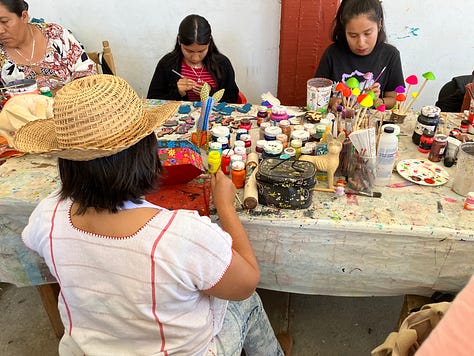

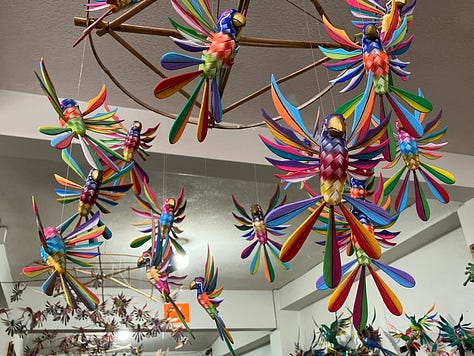
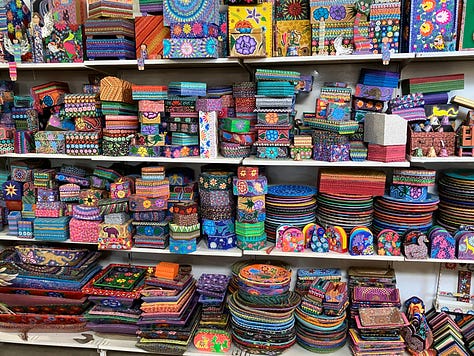
San Bartolo Coyotepec: Black pottery from the village of San Bartolo Coyotepec is a great place to visit. You will learn about the process of making black pottery which is lengthy and requires enormous skill on the part of the artisan.
Doña Rosa made this pottery famous and many of her pieces are now in museums. Her family has kept up the family business and the workshop is still there to invite visitors to San Bartolo to have a look around the workshop and purchase a souvenir of their trip to Oaxaca.
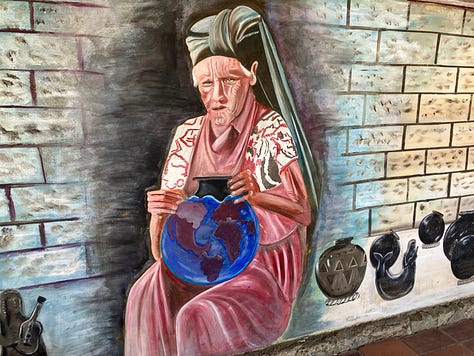
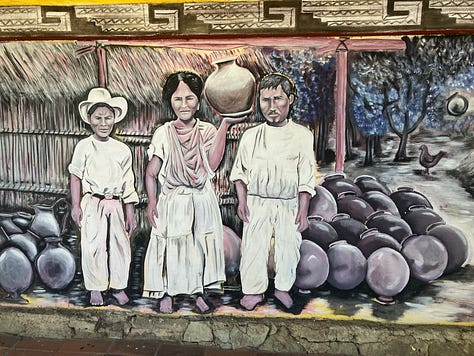

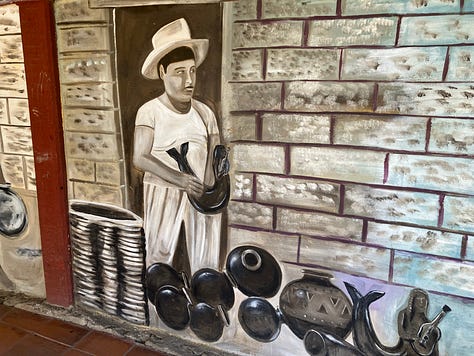
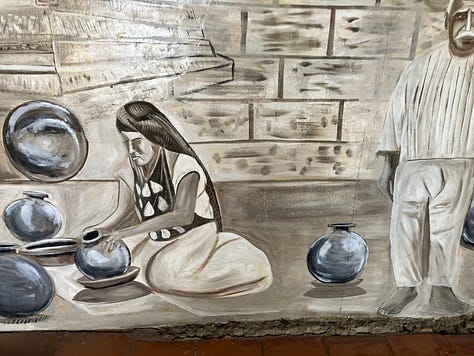

San Bartolo Coyotepec | © Kacey Carpenter
Oaxaca - A Learning Journey
I love the food, history, and culture of Oaxaca but want to learn more about the language and experience in Oaxaca. I am attending the Oaxaca International School as part of this journey. This isn’t your average language school. It’s a place where you don’t just learn Spanish; you live it.
Tucked away in the historic “Siete Principes” neighborhood, the school is a stone’s throw away from the heart of Oaxaca. It’s a place where learning goes beyond the classroom. You’re not just memorizing verb conjugations here; you’re immersing yourself in Oaxaca's culture, history, and soul.
Muchas Gracias Oaxaca! ☀️
As I say adios to Oaxaca’s 88-degree weather, a stark contrast to the Pacific Northwest chill I’ll soon return to, I am filled with gratitude for Oaxaca, its people who have welcomed us with open arms, and my fellow travelers who have shared this adventure with me.
Muchas gracias, Oaxaca. Hasta la vista! ¡Hasta pronto, amigos!




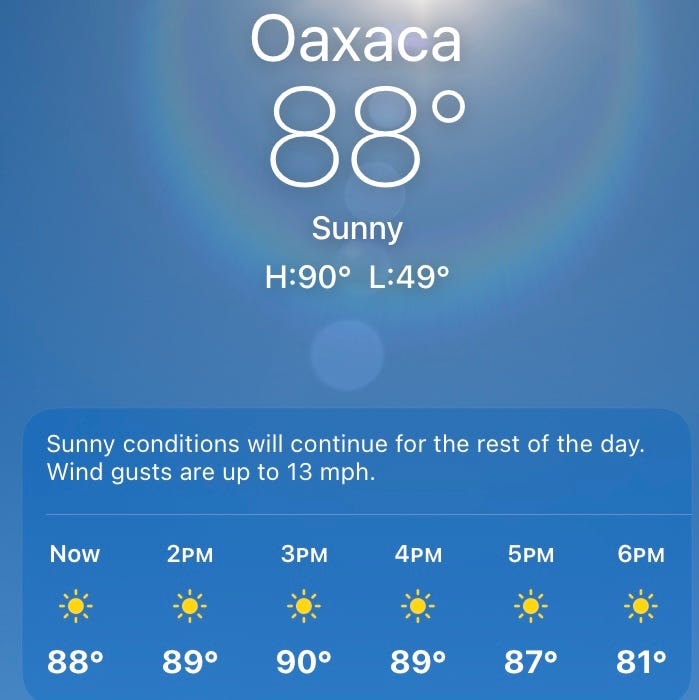
Murals in Oaxaca https://www.facebook.com/reel/370388245847376?fs=e&mibextid=xCPwDs
Street art in Barrio de Jalatlaco Oaxaca https://www.facebook.com/reel/745134004002878?fs=e&mibextid=xCPwDs